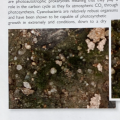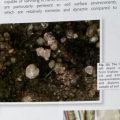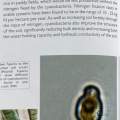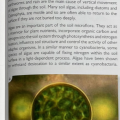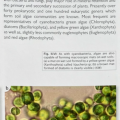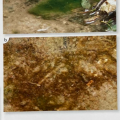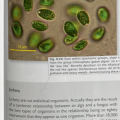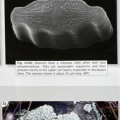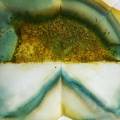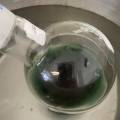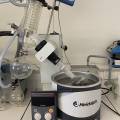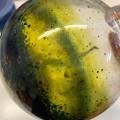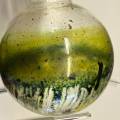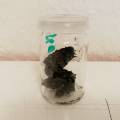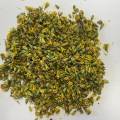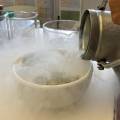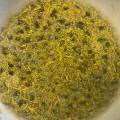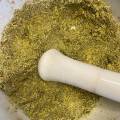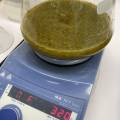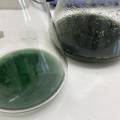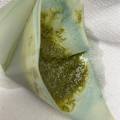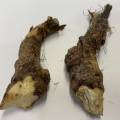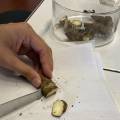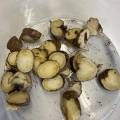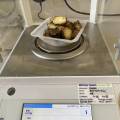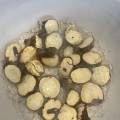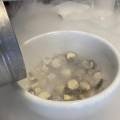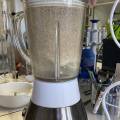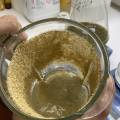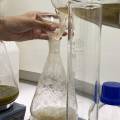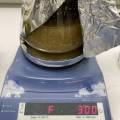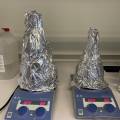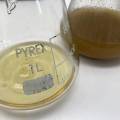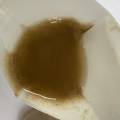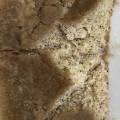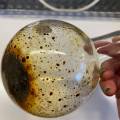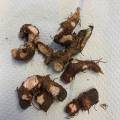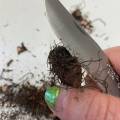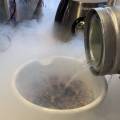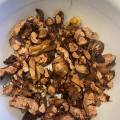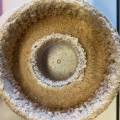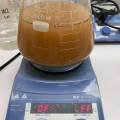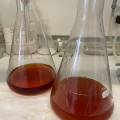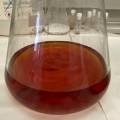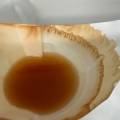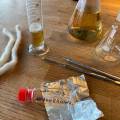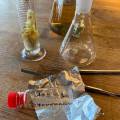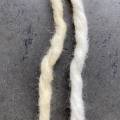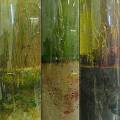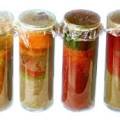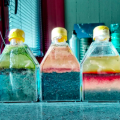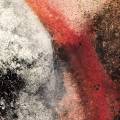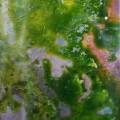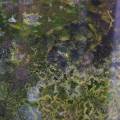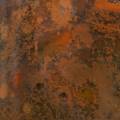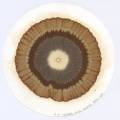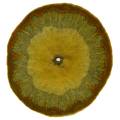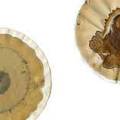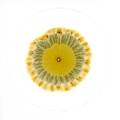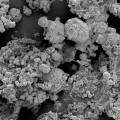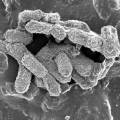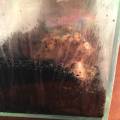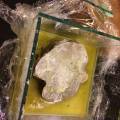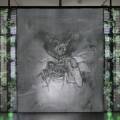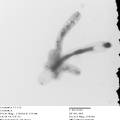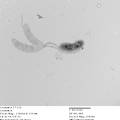Table of Contents
Are we all Lichens?
We have never been individuals. Recent excitement about the lichen microbiome and additional partners remind us that this sentence makes a powerful point about how we all depend on other organisms to become who we are. Scott F. Gilbert
In de 'Lab' sectie van de tentoonstelling: het microbioom van de regio zichtbaar maken via een kleuren cartografie . De symbiose tussen planten, bacteria, bodemleven en dieren (inclusief mensen) visualiseren via kleuren ge-extraheerd aan lichen, planten, bacteria en bodem. Steeds vertrekken vanuit 'symbiose'.
Op deze manier wordt een lokaal kleurenpalet gecreëerd. En dat palet wordt gevisualiseerd in een reeks kunstwerken gerealiseerd met verschillende technieken, o.a. textielweefsels, Sensorial Skins gegroeid door bacteria, 'bioplastics', maar evengoed video, photo's, sculpturen, performances en artist books.
- soil: bacteria die kleur afgeven. Casestudy: o.a. Grès des Vosges (rose).
- soil study omvat ook een research naar lokale wilde planten, symbiose plant/aarde</hi>. Wilde en medicinale planten geven ook goede verfstoffen. Casestudy: Arnica (July)
- andere lokale wilde planten en bloemen
- lokale lychen
- mossen
Het project onderzoekt o.a. bepaalde cruciale verbindingen tussen verschillende organismen die worden aangetroffen in lokale grond- en plantenstalen die verzameld werden tijdens een van de voorbereidende residenties in de Elzas regio.
réaliser une topographie coloré des Vosges
Dans l'expo, une section 'Laboratoire' sera établi, où nous travaillerons sur une cartographie de Mulhouse et de ses environs visualisé par des couleurs. Visualiser la topographie à travers les couleurs du sol. La couleur est extraite du sol local par 1. decoction ordinaire des échantillons; 2. cultures des bactéries pigmentés trouvés dans les échantillons; 3. par extractions de pigments des plantes qui sont ceuilli à des endroits représentatifs de la région et dont les constituents sont le résultat de l'interaction de la plante avec la vie organique du sol. Point de départ est toujours la symbiose entre organismes.
De cette façon, une palette de couleurs locales est créée. Et cette palette sera visualisée dans différentes œuvres d'art, à l'aide de différentes techniques (ex. teindre, tissage, spectrographie, absorption capillaire des pigments liquides, …), notamment des textiles et des 'peaux sensorielles' cultivées par des bactéries.
- le sol : des bactéries qui dégagent de la couleur.
- cas : a.o. Grès des Vosges (rose). Dans le cas du grès des Vosges, la couleur rose est due à la présence d'oxyde de fer, qui provient de l'altération de minéraux riches en fer (micas noirs ou magnétite) lors du processus de diagenèse. (web) + https://sciences-nature.fr/gres-rose-vosges/
- L'étude du sol comprend également des recherches sur les plantes sauvages locales, la symbiose entre les plantes et le sol. Les plantes sauvages et médicinales donnent également de bonnes teintures. Étude de cas : Arnica (juillet).
- Autres plantes et fleurs sauvages locales
- lychen locaux
- mousses
methodes de recherche avec l' Université de Strasbourg
sol / bacteries / couleur
Le Vivant (plantes, bacteries) + leur lien avec les couleurs
extraction de pigments:
Making the invisible visible
Translation / Transitions / transformations
Liquid / solid – state of materials – organic & anorganic
Spectrality
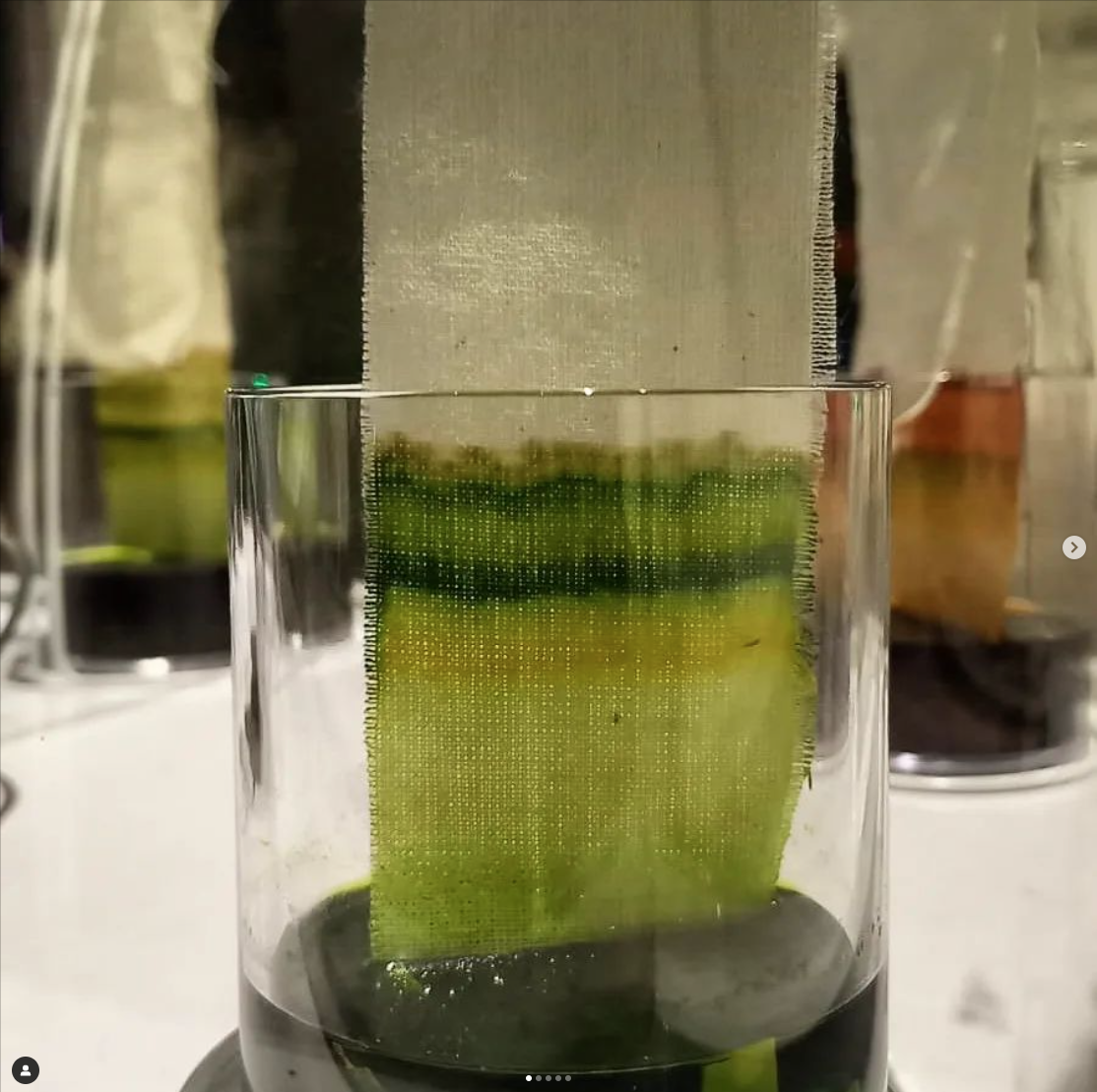
Photosynthesis: pigmented macromolecules absorb specific wavelengths of visible light. Spectrum of colors.
- Quelles sont les plantes médicinales et/ou tinctoriales locales qui poussent dans les Vosges ? Quelles sont les substances utiles contenues dans l'Arnica ? Peut-on en extraire des colorants ? Les bactéries présentes dans le sol où les fleurs sont récoltées affectent-elles les substances bénéfiques ? Ph ?
- Quels sont les lychen intéressants que l'on peut trouver dans les Vosges ? Peut-on en extraire des pigments ?
- Examinez différents échantillons de sol à la recherche de bactéries et de couleurs. Par exemple. La couleur vieux rose de l'herbe des Vosges est-elle due aux pigments des bactéries présentes dans la roche ?
- Welke lokale medicinale en /of verfplanten groeien in de Vosges? Welke nuttige stoffen zitten er in Arnica? Kunnen er kleurstoffen aan onttrokken worden? Hebben de bacterieën in de grond waar de bloemen geoogst worden invloed op de nuttige stoffen? Ph?
- Welke interessante lychen vinden we in de Vosges? Zijn er pigmenten aan te onttrekken?
- verschillende grondstalen onderzoeken op bacteria en kleur. Vb. Wordt de oud-roze kleur van de Grès des Vosges veroorzaakt door pigmenten van de bacteria in het gesteente?
methode:
Extraction de pigments du sol, de bactéries du sol, d'organismes symbiotiques du sol (litchis), de plantes poussant sur certains sols, … l'alchimie, la chimie et la biologie.
Pigmentextractie van de grond, van bacteria in de grond, van symbiotische organismen in de grond (lychen), van planten die groeien op bepaalde grond, … alchimie, chemie en biologie.
Randonné 1 - Haute Vosges: plateau Hohneck
?gele gentiaan - Gentiana lutea - gentiane jaune (racine)
zuring - Rumex acetosa - oseille (racine)
echte Guldenroede - Solidago virgaurea - Solidage verge d'or (sommités fleuries, bloeiende toppen) dubbel afkooksel
?arnica- Arnica montana - arnica (fleur)
?adderwortel - Persicaria bistorta (Bistorta officinalis) - renouée
?digitalis - Digitalis purpurea - digitale
?betonie - Betonica officinalis - epiaire officinale
?rode klaver , gele klaver, witte klaver
meekrap - Rubia tinctorum - garance des teinturiers (racine)
valse heide - Calluna vulgaris - fausse bruyère
potentilla - Potentilla tormentilla - tormentille
wilg - Salix - saule
blauwe bessen - Vaccinium myrtillus - myrtille (baie)
vlier - Sambucus nigra - surreau (baies)
japans knoopkruid - renouée japonaise (bladeren)
ortilles - - netels
UniStra dag 01: Faculté de Pharmacie
extraction de pigments de plantes, avec Sergio Ortiz
Op dag 1 werken we met Gentiana lutea (wortelstok) (https://nl.wikipedia.org/wiki/Gele_gentiaan) en met Solidago virgaurea (bloeiende toppen) (https://nl.wikipedia.org/wiki/Echte_guldenroede).
We gebruiken een hydro-alcoholish protocol (85% ethanol, 15% water) voor extractie van de kleurstoffen. Hiervoor gaan we de zuurtegraad van de hydro-alcoholische oplossing bijsturen. Er wordt 1 molar acide chlorifique toegevoegd om de oplossing meer acide te maken. Hierdoor kunnen zeer bepaalde stoffen/pigmenten aan de plant onttrokken worden. De beslissing om de oplossing meer acide (zuur) of meer basich te maken kan opgezocht worden in bestaande beschreven protocollen over de betreffende plant.
- Eest wordt het basismateriaal gewogen. We vertrekken van 45gr Solidago virgaurea en van 50gr Gentiana lutea. Te volgen stappen:
- pulvérisation (om de contact oppervlakten met de oplossing te vergroten). De wortels zullen we eerst behandelen met vloeibare stikstof en daarna fijnmalen in een blender, de bloemtoppen worden behandeld met vloeibare stikstof aan -80°C azote liquide om te droogvriezen.
- oplossing (ethanol 85%/gedistilleerd water15%) klaarmaken (1/10 = 1gr materiaal op 10ml oplossing)
- het materiaal wordt 24u geschud in de oplossing
- na 24h wordt het materiaal gefilterd
- uit dit concentraat worden liquides (de hydro-alcohol oplossing) volledig verwijderd via een soort van verdampingsproces waarbij de oplossing lichtjes verwarmt wordt en enkel de vaste delen overblijven
- de resterende droge stof (pigment) wordt van de houder weggekrabd en bewaard als finaal materiaal
- resultaat: Solidago virgaurea: GROENGEEL, Gentiana: LICHTGEEL
Rumes - Oseille - Zuring: ROOD
Van deze plant gebruiken we de wortels. We wegen: 130gr )(gekuist). Fijnstampen na droogvriezen met vloeibaar stikstof. We maken een medium met 1105ml ethanol en 395ml gedistilleerd water. 24u trekken, dan filteren.
plantes tinctoriales
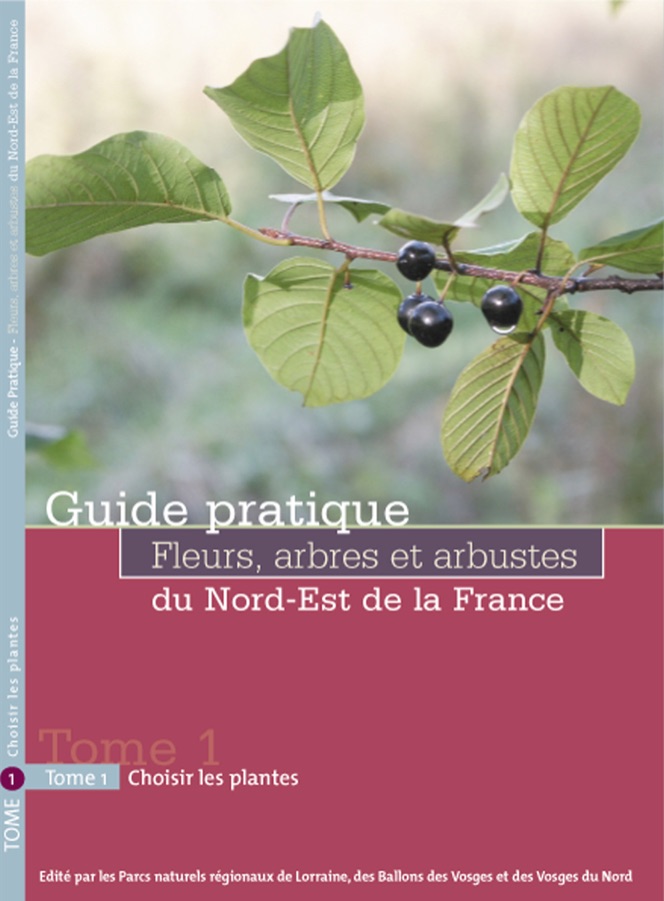

Arnica - Prairies des Vosges
wikipedia Arnica montana
Arnica montana grows in nutrient-poor siliceous meadows or clay soils. Arnica does not grow on lime soil, thus it is an extremely reliable bioindicator for nutrient poor and acidic soils. It is rare overall, but may be locally abundant.
research avec Pierre Fechter, 7/7/2022
Pierre Fechter (microbiologie)
Regine Janel (microbiologie)
Elisabete Silva (Pharma)
Catherine Senecheau (diensthoofd Pharma)
Sergio Ortiz (Pharma)
Gysèle Archipoff (botaniste) - archipoff@unistra.fr (Welke planten goed in najaar? Waar de beste lichen vinden?)
Next residency: week 21 november (vacances Toussaint = 22/10 tot 7/11)
Stagiaire: 3 weken in september / 3 weken in november (extractions pigments)
Met Pierre, in november werken op:
1. Winogradsky column (soil bacteria van 5 verschillende planten, te oogsten samen met de mensen van Solinest / NA!) ⇒ reageerbuisjes met soil voor in de expo
2. Soil Chromatography
3. Pseudomonas (molecules gele kleur = de stof pioverdine). De kleur uittesten op klein stukje stof, al dan niet met mordant geprepareerd. Kleuren aanpassen door elementen toe te voegen? Alum? Azijn?
Serie kleuren op basis van sap van rode kool, met naar links toe toevoeging van acide (citroen etc.) en naar rechts toe toevoeging van een base stof.
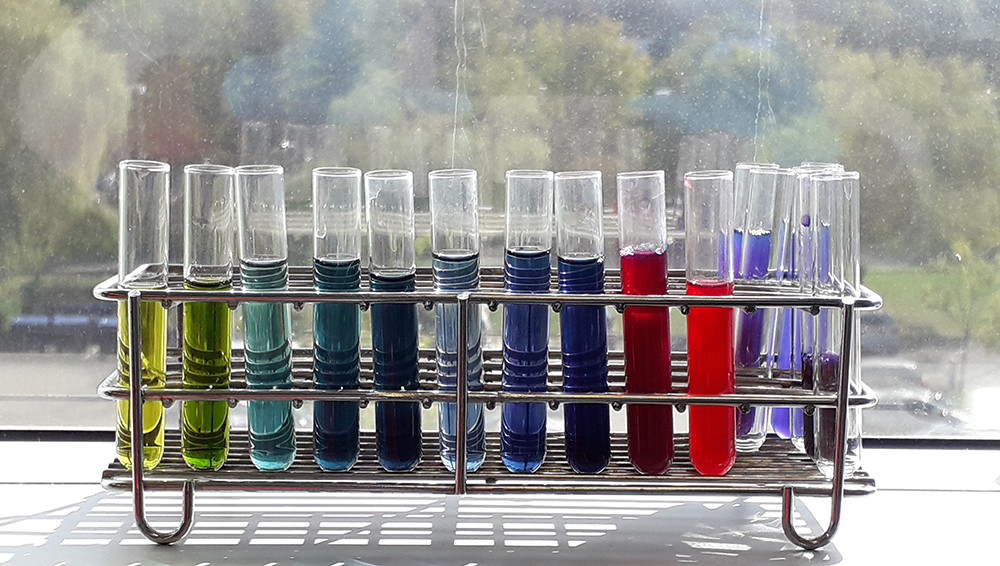
4. Optical microscopy: video microbiome du sol / making the invisible visible : mycorrhyze networks, soil organisms, bacteria, … (Serge Dumont, specialiste video).
5. SEM fotoos maken van bepaalde soil micro-organisms
6. materiaal voor presentatie in de expo: de archieven/kelders van UniStra
Met Sergio Ortiz + stagiaire, in september en november:
1. Werken op pigment extractie van planten. Welke planten (lijst maken), wanneer verzamelen? (planning maken voor ofwel voordien verzamelen en drogen, ofwel op dat moment plukken)
2. Lijst planten: myrtilles, surreau, renouée du japon, ortilles
3. Maar vooral: lichen! Check goede plaatsen met Gysèle Archipoff
Pigmented bacteria
Soil bacteria containing Pyoverdine:
Pyoverdine is an iron-chelating siderophore produced by Pseudomonas aeruginosa, which is an opportunistic pathogen for several infectious diseases.Pyoverdine, the yellow-green, water-soluble, fluorescent pigment of the fluorescent Pseudomonas species, is a powerful iron(III) scavenger and an efficient iron(III) transporter.
new processus at MIT:
indigo-coloring with bacteria

research Winogradski column
Living installation with soil bacteria. Model microbial ecosystems prepared by adding pond sediment to a clear cylinder or flat container with additional supplements and incubated with light. Environmental gradients develop within the column, creating diverse niches that allow enrichment of specific bacteria. A Winogradsky culturecontains a highly diverse micro-ecosystem of soil bacteria and algae. Prior to installation, soil samples are locally sourced, then grown on-site for several weeks, resulting in a site-specific work. The work functions as a portrait of the region and represents the minute complexities of the local environment, its genetic, bacterial and geological profile. Once sealed, the culture continues to evolve on its own over time, changing in color, texture, and pattern in reaction to the ambient environment such as oxygen levels, light, and temperature.
Winogradsky columns are a method for essentially taking a snapshot of a sediment environment and studying the microbial communities that live there.
Late-summer or early fall are good times of year to collect sediment samples. Samples from a plant-matter or carbon- rich environment, particularly with signs of anoxia (refer to field guide section) are more likely to produce Winogradsky columns with diverse microbial communities.
Samen met de microbiologen van UniStra (Universiteit Strasbourg) werken we op visualisaties van de inhoud van de grondsamples van de regio, met de SEM (voor dood bacterieel materiaal) en met de lichtmicroskoop (voor onderzoek van het levend bacterieel materiaal). Selectie maken van interessante samples (bacteria, soil micro-organisms, tardigrades, lichen, cyanobacteria, plantenonderdelen, grondsamples).
protocols:
protocol for making a Winogradski column - protocol Pierre (mislukt)
HowTo Winogradski
https://en.wikipedia.org/wiki/Winogradsky_column
http://www.sumanasinc.com/webcontent/animations/content/winogradsky.html
http://archive.bio.ed.ac.uk/jdeacon/microbes/winograd.htm
https://www.scientificamerican.com/article/bring-science-home-soil-column/
http://www.personal.psu.edu/faculty/j/e/jel5/biofilms/winogradsky.html
Soil Chromatography
Explore the richness of the soil through learning a hands-on biochemical method of making a soil chromatography on paper.
HowTo:The soil mixture is poured into a petri dish, and is drawn up through a wick inserted through the middle of the filter paper. The different elements in this soil mixture move through the paper at different rates through capillary action, resulting in distinctive patterns.
Collect written data about the sampling sites, e.g. coordinates, nature type, the weather, surroundings, etc. The aim is to explore our relationship to the soils we inhabit – their role in the networks of ecosystems and the different kinds of agencies within.
Microscopie UniStra
pigmented bacteria
Micro biologist Sergei Winogradsky
Winogradsky column
Conference non-human agents, art laboratory Berlin (2017)
http://www.artlaboratory-berlin.org/html/de-event-40.htm
Ted Talk - How Bacteria Talk:
https://www.ted.com/talks/bonnie_bassler_on_how_bacteria_communicate
Bacterial dyes in Fashion:
https://www.asm.org/index.php/general-science-blog/item/6929-bacterial-dyes-in-fashion
https://issuu.com/kukkadesign/docs/living_colour-ibook
Janthinobacterium lividum (Indigo):
https://en.wikipedia.org/wiki/Janthinobacterium_lividum
Streptomyces coelicolor (blue):
https://microbewiki.kenyon.edu/index.php/Streptomyces_coelicolor
Bacteria and Art:
https://microbewiki.kenyon.edu/index.php/Bacteria_and_Art:_Creation,_Deterioration,_and_Preservation
Living Color: Bacterial Pigments
http://journals.plos.org/plosbiology/article?id=10.1371/journal.pbio.1000510
Streptomyces coelicolor, faber futures
Streptomyces have a life cycle similar to that of fungi. The cycle starts with growth of vegetative mycelium from a spore, followed by ariel mycelium, and, then, spores.
Faber Futures - textile dyeing with bacteria
https://colorscultures.sciencesconf.org
Sämi LUDWIG / PU1 anglais / Membre d'ILLE (4363)
Institut de recherche en Langues et Littérature Européenne
Université de Haute Alsace - UHA / Mulhouse (F)
10, rue des Frères Lumière / F - 68093 MULHOUSE Cedex
Textiles and Dyes in the Mediterranean Economy and Society - purple dye production

